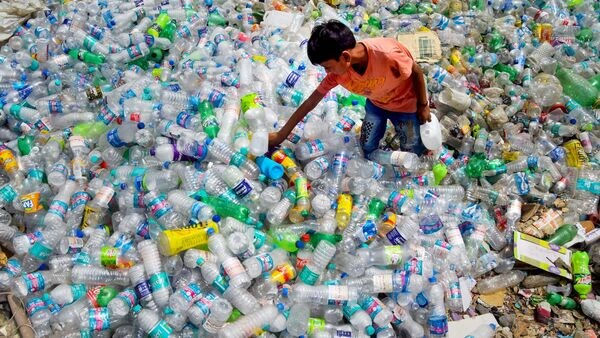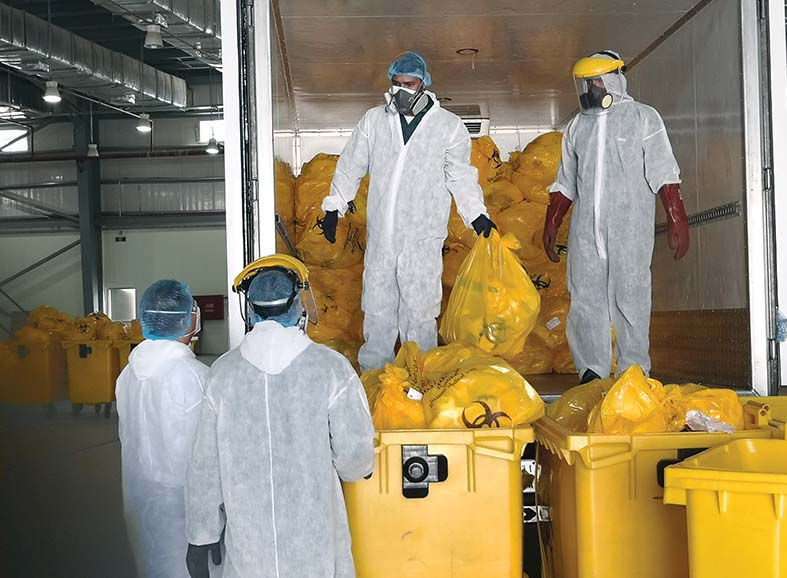Beyond Hospitals: The Many Sources of Biomedical Waste
- Dr. Sanjay Joshi

- Jun 27
- 3 min read
Biomedical waste doesn’t just come from hospitals — it is generated across a wide range of healthcare settings.”

In continuation of last week’s article on Sunita’s hospitalisation and the biomedical waste generated during her treatment, let us now take a closer look at where this waste originates and what it consists of. Biomedical waste doesn’t just come from hospitals — it is generated across a wide range of healthcare settings, from large medical institutions to small clinics and even home-based care. Depending on the type of facility and the nature of medical procedures performed, the volume and kind of waste can vary greatly. In this article, we will explore the primary and secondary sources of biomedical waste and examine its key components, some of which pose serious health and environmental risks.
As mentioned, biomedical waste originates from a variety of healthcare settings, which can be broadly classified into two categories: primary and secondary sources. The primary sources include private and government general hospitals, maternity hospitals, clinics of general practitioners, medical colleges, veterinary colleges and hospitals, blood banks, pathology labs, animal houses affiliated with research labs (mostly located in pharmaceutical industries), etc. Blood donation camps, dental clinics, domestic healthcare practices, primary healthcare centers, educational institutions, industrial healthcare centres, AYUSH hospitals, etc., are considered secondary sources. The type and quantity of the waste depend on the sources of generation.
Composition of biomedical waste
Waste generated in healthcare centers is broadly divided into hazardous and infectious waste and non-infectious or general waste. Infectious waste is further categorised into the following four major categories:
1) a) Human anatomical and pathological waste: This accounts for only a small fraction, comprising about 10-15 per cent of the total waste generated in a hospital. However, this small fraction is of the biggest concern, as it poses a direct threat to the health and hygiene of human beings by transmitting viral, bacterial, fungal, or parasitic diseases. This type of waste includes internal organs such as appendices, tumours, glands, and tissues. It also includes any other organs removed during surgery, biopsy, or other medical procedures. Body parts like legs or hands that are partially or completely amputated are included. The placenta removed during childbirth is part of this waste. Aborted foetuses are also included.
Blood and other body fluids fall under this category. Animal carcasses and tissues from laboratories are part of this waste as well. Used dressings and cotton swabs soaked in blood or body fluids are included.
Hospital gowns, aprons, and other similar materials also form part of this waste. In short, any material that has been contaminated with a patient’s blood or other body fluids belongs to this category of waste.
b) Animal anatomical and pathological waste: Experimental animal carcasses, body parts, organs, and tissues, including the waste generated from animals used in experiments or testing in veterinary hospitals or colleges, or animal houses in pharma industries, also belong to this category.
2. Plastic waste: The use of plastic articles for treatment purposes has become very common in hospitals, not only in India but all over the world. Disposable plastic items used in hospitals are generally made from high-quality, sterilised plastics like polypropylene, high-density polyethylene (HDPE), and PVC, which are ideal for their strength, flexibility, durability, etc. These articles are also ideal for maintaining sterility. Thus offering crucial benefits like infection control and ease of use. However, they also contribute significantly to medical waste, accounting for about 25 per cent to 30 per cent of the total volume. These articles include syringes, IV sets, and tubing used for intravenous administration of medicines; gloves; catheters; endotracheal tubes; cannulas; dialysis sets; blood and urine bags, etc. Most of the syringes are either for intramuscular or hypodermic injections to inject medicine into the body.
3. Metal Sharps: Waste Sharps, including metals, needles, syringes with fixed needles, needles from needle tip cutters or burners, scalpels, blades, or any other contaminated sharp object that may cause punctures and cuts. This includes used, discarded, and contaminated metal sharps.
4. Glass: Broken or discarded and contaminated glass, including medicine vials and ampoules, except those contaminated with cytotoxic wastes.
More on the other categories of waste will be discussed in my next article. Until then, have a good weekend!
(The writer is an environmentalist.)




Comentários